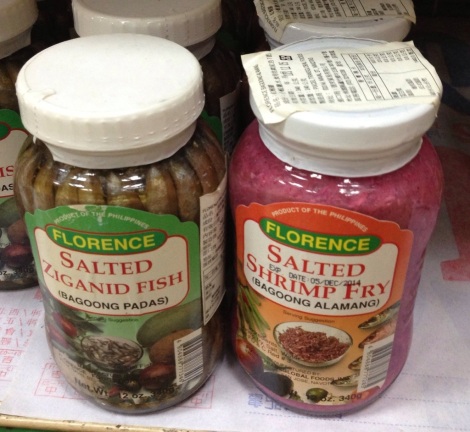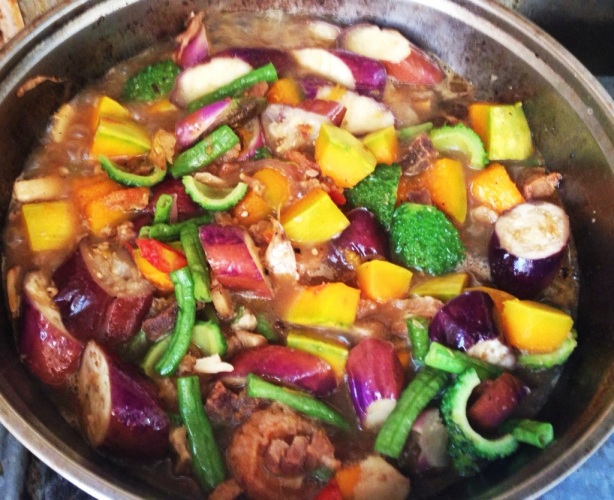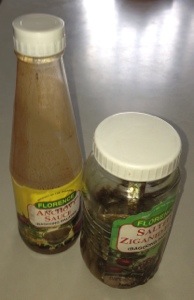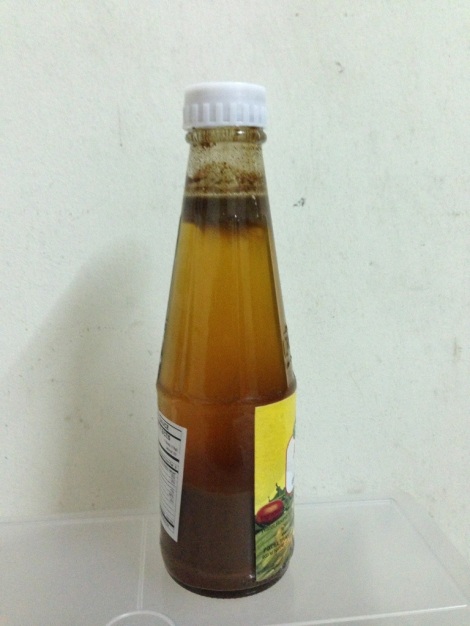I usually can afford to cook on the weekends, Filipino foods of course. On the weekdays, time is so tight so I default to eating in Taiwanese eateries, or do guerilla foods.
One thing I noticed, Taiwanese foods are more oily than Filipino foods, their vegetables are almost always stir fried. The problem with that is my body is not used to too much oil, I found that I gain weight fast considering that vegetable oil does convert to energy and I am not doing that much physical excertion. Plus, too much oil is detrimental to the liver. I did not grew taking in that much oil, my body is not adapted to that. Compared to the Taiwanese people, their body has adapted to that much oil, I suppose, they’re pretty normal with it.
So I go Filipino foods too to balance it off. On the weekends, I did pinakbet, the superstar vegetable stew in the Philippines.
Pinakbet originated in Ilocandia at the northern-west part of the Philippines. It has been widely adapted throughout the country though. Understandably, every locality has added their own twist. But just the way it is cooked, I could say if a pinakbet is cooked by somebody from the Central Philippines ( Katagalogan ) or from the South ( pinakbet Bisaya style ), or by an Ilocano ( the pinakbet purists ).
My way of cooking is my own style I developed which I found acceptable, if not ok’d, by friends from these 3 regions. I have lived and worked with different people from all three regions myself.
If I may try to differentiate the 3 styles of cooking pinakbet, here are my hints:
Use of bagoong
Ilocanos don’t use salt for pinakbet, they use bagoong(fermented fish sauce) to get the saltiness desired. The flesh of the fermented fish is also included, the bones sieved out. The Ilocanos don’t use patis (the clear sauce) only, and never the bagoong-alamang (fermented shrimp paste). Now, don’t argue with the Ilocanoes about that. Much like you don’t tell a Kapampangan the best way to cook bopis, and a Cebuano the best way to make danggit. Ilocanoes are the bagoong people of the Philippines. When they say bagoong, it’s the murky sauce, not the clear sauce, and definitely NOT shrimp. Fermented shrimp paste is totally a different thing, they call it aramang, in Tagalog it’s alamang.
 Bagoong (brown), Alamang (pink)
Bagoong (brown), Alamang (pink)
Tagalog people from Central Philippines use bagoong and alamang interchangeably. So you’d find pinakbet using either a fermented fish sauce, or fermented shrimp. If people from Central Philippines use bagoong, it’s only for flavor and then they use salt to taste.
Bisayans use patis, the clear sauce, only to flavor and taste. And it’s called toyo in the Southern Philippines. Don’t get confused with the toyo in Central and North Philippines, which is soy sauce.
Patis is the clear part of fermented fish sauce. That clear part of the sauce is what occupies the upper part in the jar or bottle, the real sauce is the murky part that occupies the bottom with all the sediments and other merry stuffs.
Patis:
Sahog (the meaty ingredients)
The purists use chicharon bulaklak (deep fried, crispy pig intestines) as meat ingredient. Through time though, because chicharong bulaklak isn’t easy to find, most use pork. All other pinakbet styles use pork.
The pork is a tell who has been cooking. Many saute the pork over garlic and unions. Ilocanoes do it differently- pork is boiled until the stock dries out; then they patiently wait for the pork fat to come off the fatty parts, then stir fry the pork on its own fat until it is golden brown. The pork is cooked to almost chicharon (pig skin cracklings). Only then they put garlics and start the cooking process.
The cooking process
The cooking process of pinakbet known to most is now based on time saving and convenience premise. If you have seen how the old Ilocanows cook pinakbet, you’ll be amazed of the thoughfulness and patience they impart to the dish.
Commonly, pinakbet now a days is cooked just like another stir fried vegetable, except that when the vegetables are half done, the fermented fish soup base is added, bring the whole thing to boil, and wait until cooked. That’s it.
Old Ilocanoes don’t do that. And luckily I have had the pleasure to learn how they do it. And man, the difference in taste is miles apart.
What they do is after cooking the fat off the pork, they boil the vegetables, spices (garlic, onions, ginger), together with the pork in the fermented fish sauce. Cooking is preferably done in an earthen pot, and over low heat; if no earthen pot is available, cast iron pots takes the job, those thin aluminum cooking utensils are the last choice. I’m not clear about the science of prefering “thick” cooking wares though. I believe it’s for even cooking, because thin pots or pan tend to heat too much where the flame is.
Not much water is added to the fermented sauce soup base. Salty? Yes it is. Like you can feel the tingling in your lips because of the soup base’s saltiness. The slow cooking allow the fermented fish sauce to permeate the vegetables. That’s it. Original pinakbet. No oil at all, nothing. But bagoong tastes good with oil. So, commonly now, they saute garlic, unions, ginger and tomato on a separate pan, then they pour the already cooked stew to the sauteed spices, bring it to boil, done. That’s pinakbet gisado. Still, different from the original pinakbet.
Note the 3 stage of cooking. Cook the pork, stew the veggies, then pour on sauteed spices. Very engaging, and really time consuming. But I tell you, that’s the best pinakbet you’d ever taste. Further better if chicharong bulaklak is used instead of pork.
What most people do now is too simplistic. Saute the spices, add the pork and stir fry until brown, drop the veggies, stir fry until half done, pour the bagoong soup base, cook until veggies are done.
I tell you what, that’s not pinakbet. It’s stir fried veggies with bagoong added to taste. Totally different. Pinakbet is vegetable stewed on a bagoong soup base, cooked until the bagoong’s saltiness permeates the veggies. That stir frying before adding the bagoong soup base coats the veggies and prevents the bagoong from penetrating the vegetables. Where’s the pinakbet in there then?
This post is ending a lot longer than I expected, I will just write how I cooked pinakbet in a separate post. Watch out Filipino foodies, I may challenge your pinakbets.


